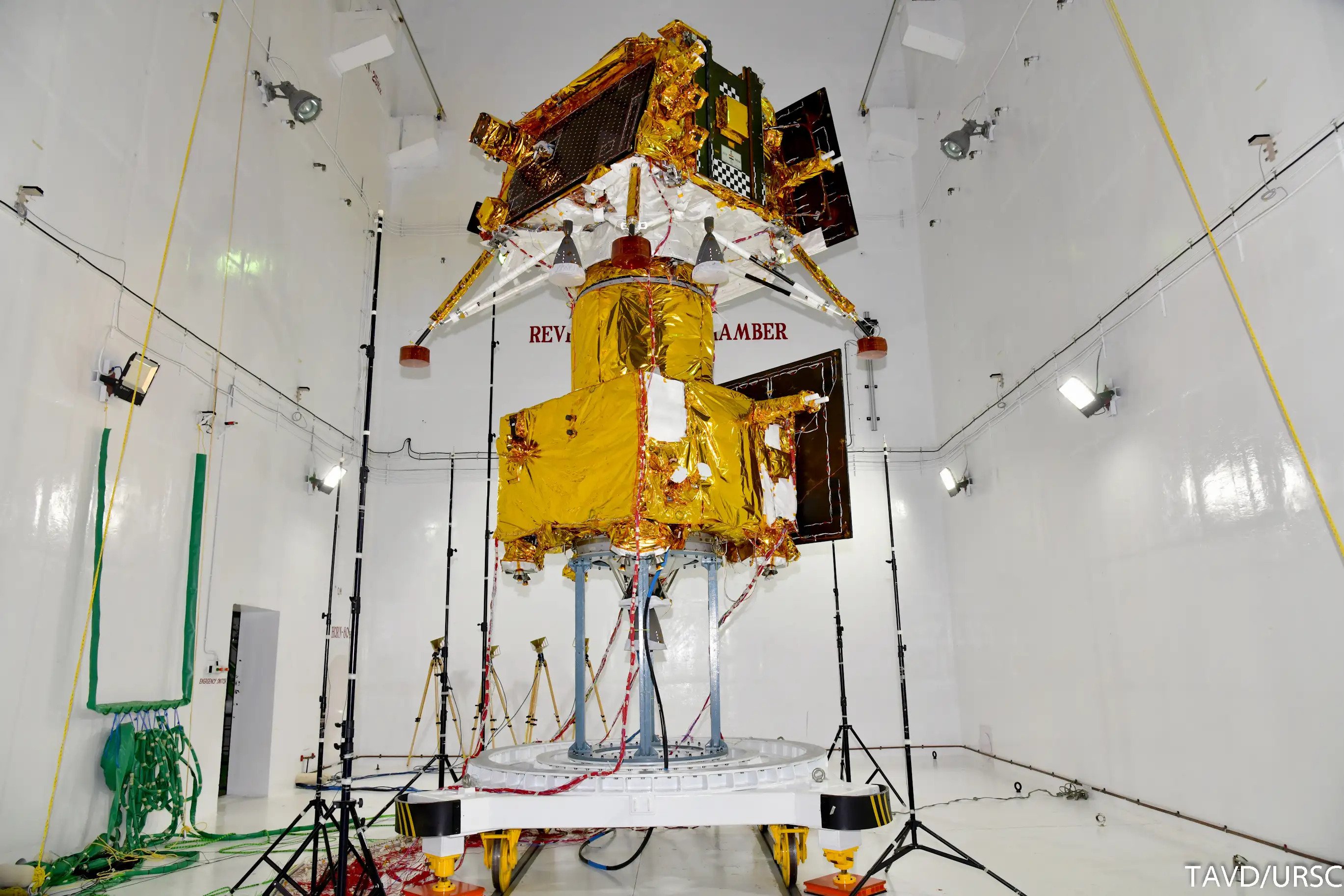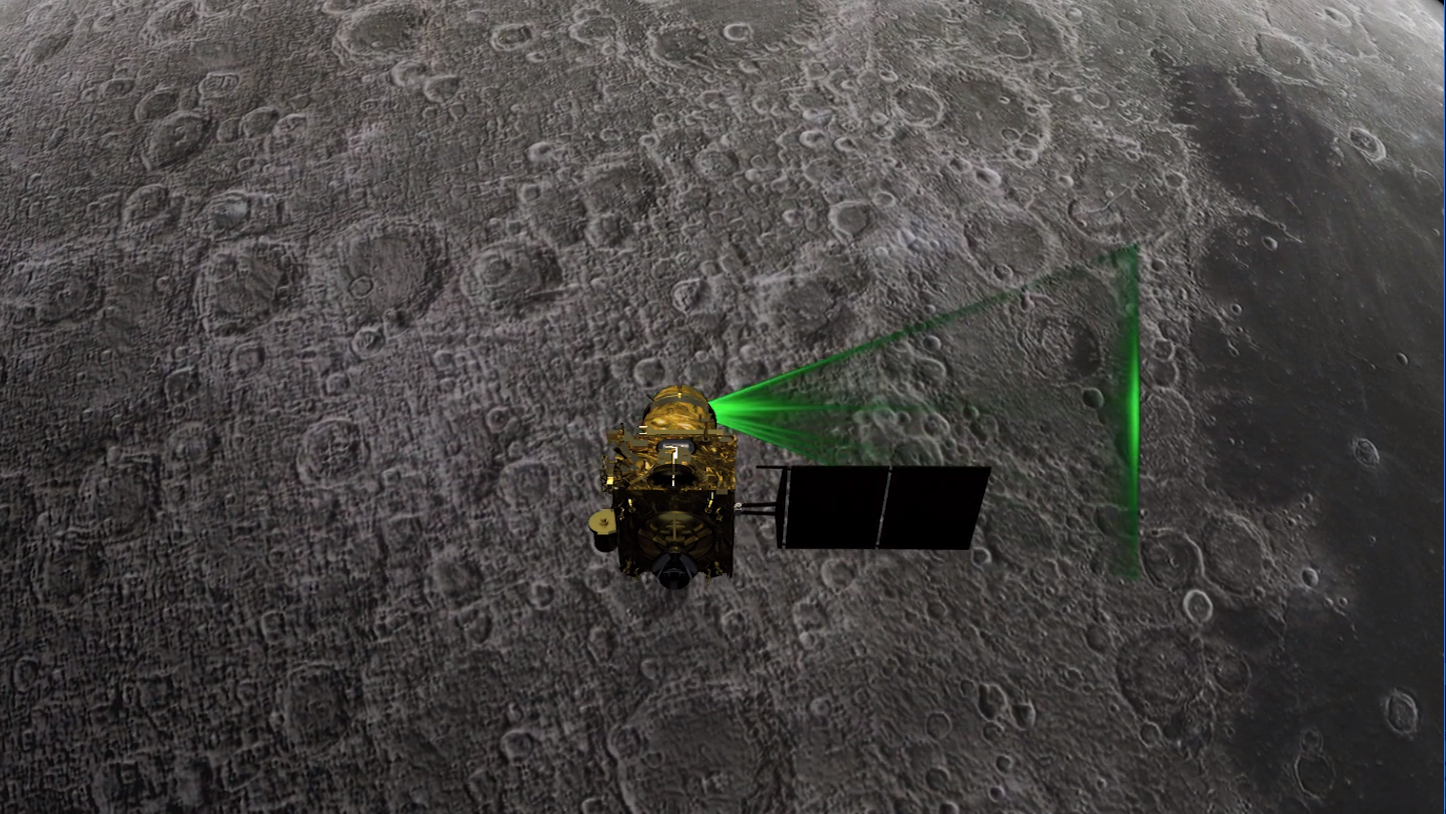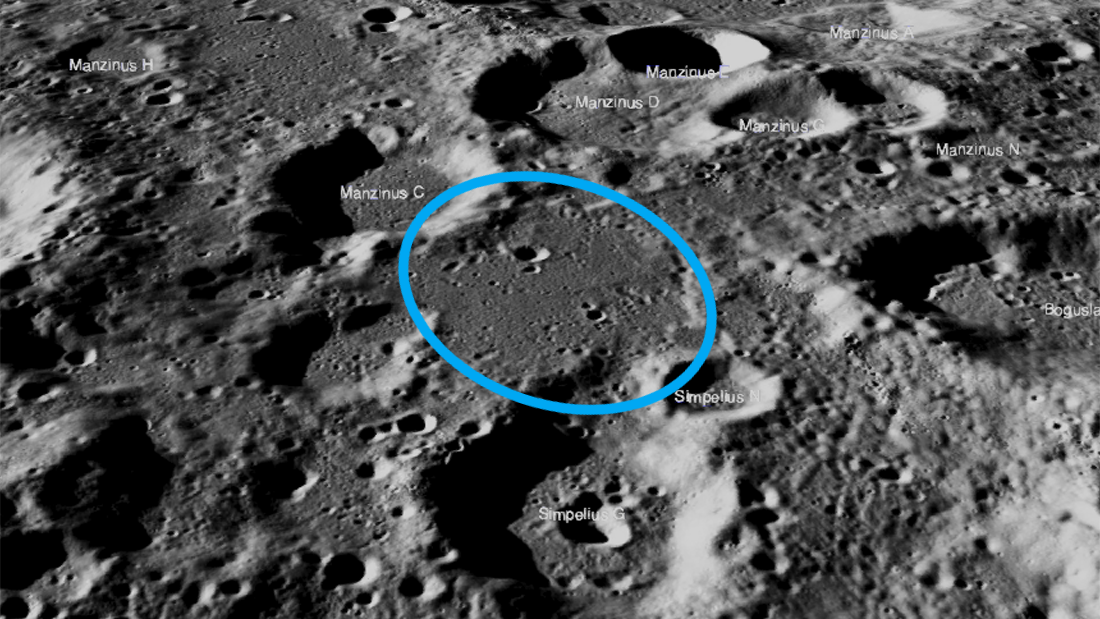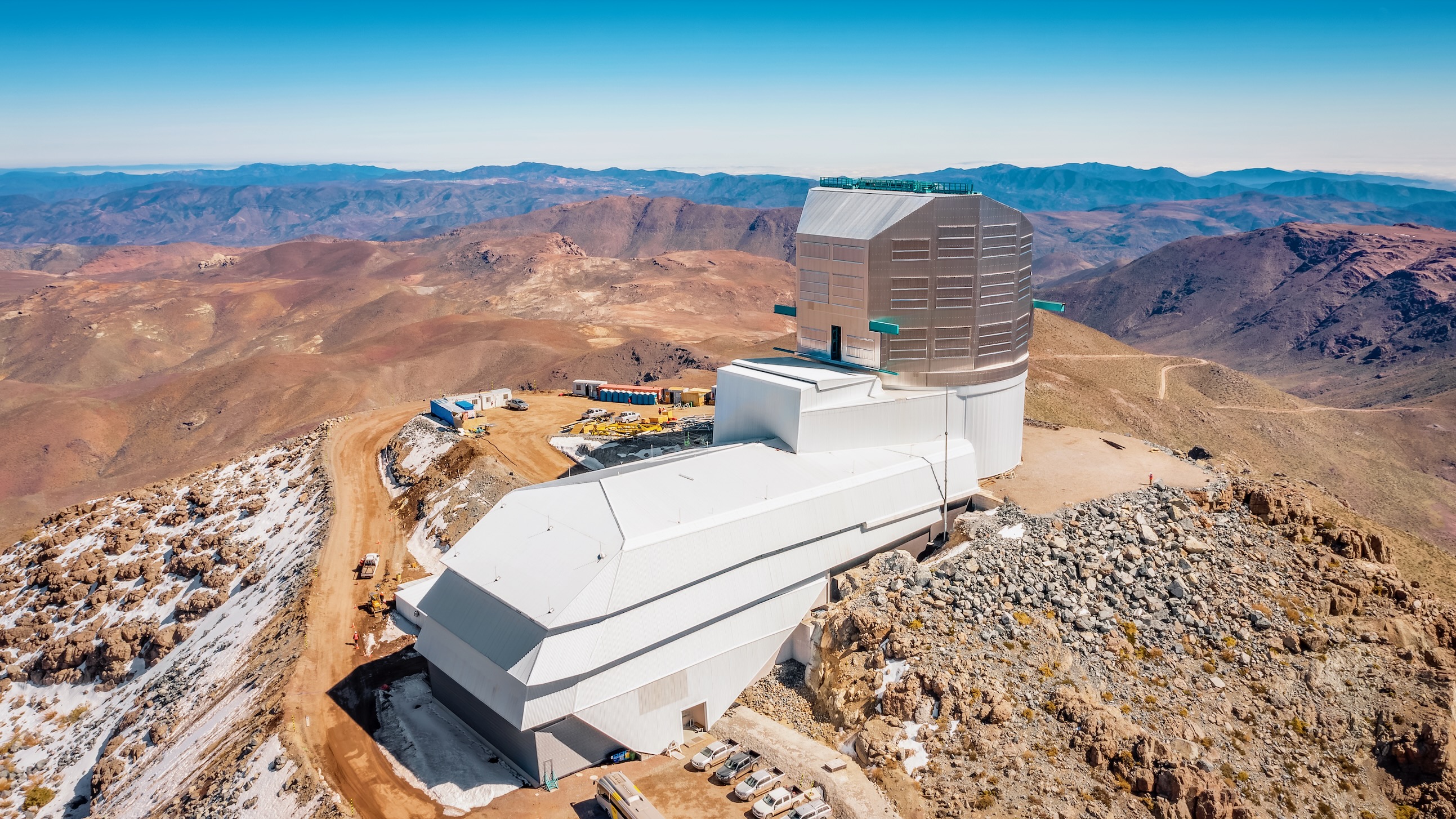Chandrayaan-3: A complete guide to India's third mission to the moon
A rover and lander will together explore the moon's surface.

Chandrayaan-3 is India's next moon mission.
The spacecraft launched to the moon on July 14, 2023, at 5:05 a.m. EDT (0905 GMT or 2:35 p.m. local time July 14) from the Satish Dhawan Space Center in Sriharikota, India atop the medium-lift Launch Vehicle Mark-III (LVM3) rocket.
Chandrayaan-3 successfully landed near the moon's south pole on Aug. 23, 2023, at 8:33 a.m. ET (1233 GMT or 6:03 p.m. India Standard Time).
The mission is managed by the Indian Space Research Organisation (ISRO). ISRO's roots go back to the beginning of space exploration, as a predecessor agency was set up in 1962 and its first rocket launch was in 1963. ISRO itself was established in 1969.
In June 2023, shortly before the scheduled Chandrayaan-3 launch, India also signed on to the NASA-led Artemis Accords aiming for peaceful human and robotic exploration of the moon. While the immediate benefits of the accords accrue to human spaceflight, according to the White House, the data from Chandrayaan-3 may be useful for future Artemis human landings too.
Related: Every mission to the moon
Chandrayaan-3 mission goals
Chandrayaan-3 costs roughly $77 million USD, according to the Times of India.
The three main objectives of Chandrayaan-3 are to land safely on the surface, to demonstrate rover operations and to perform scientific experiments on site, according to the official website.
The mission called for a propulsion module to ferry the Chandrayaan-3' Vikram ("valor") lander and the solar-powered rover named Pragyan (Sanskrit for "wisdom") rover together to the south pole of the moon, according to NASA.
The module then entered lunar orbit and maneuvered into a roughly circular path about 60 miles (100 km) above the surface. Then the lander separated from the module and aimed for a soft landing on the surface, achieving this on Aug. 23, 2023.
The lander and rover will collect science on the surface for 14 Earth days (a single day on the moon), while the propulsion module will gaze at our planet for its own science experiment.
The spacecraft package (rover, lander and propulsion module) includes "advanced technologies" to meet the mission objectives, ISRO says. Examples include hazard detection and avoidance on the rover, a landing leg mechanism to aim for a soft touchdown, and altimeters and velocity instruments to estimate altitude and speed above the moon.
ISRO has performed several technology tests to simulate lunar conditions, the agency emphasized, focusing on matters such as soaking instruments in cold temperatures similar to the moon or doing a lander leg test on a simulated surface under different landing conditions.
Related: ISRO: The Indian Space Research Organization

Chandrayaan-3 science payloads
Science on the Chandrayaan-3 mission is split between the lander, the rover and the propulsion module payload.
"The lander is ... generally box-shaped, with four landing legs and four landing thrusters," NASA writes of the design. Its approximate 3,900-pound (1,752-kilogram) mass will include 57 pounds (26 kgs) for the rover.
The lander includes:
- Chandra's Surface Thermophysical Experiment (ChaSTE) to measure thermal conductivity and temperature on the surface;
- Instrument for Lunar Seismic Activity (ILSA) to detect moonquakes;
- Langmuir Probe to estimate the density and variation of plasma, or superheated gas, in the moon's environment;
- A Laser Retroreflector Array (from NASA) to measure distances using laser ranging..
The rover "is a rectangular chassis mounted on a six-wheel rocker-bogie wheel drive assembly," NASA added. The rover sends its communications to Earth through the lander. Rover instruments include:
- Alpha Particle X-ray Spectrometer (APXS) to look for elements in the lunar soil and rocks;
- Laser Induced Breakdown Spectroscope (LIBS) to examine the chemical and elemental composition of the lunar surface.
The propulsion module "is a box-like structure with one large solar panel mounted on one side and a large cylinder on top ... that acts as a mounting structure for the lander," NASA says. The propulsion module is more than 2.2 tons (2 tonnes in mass.)
The module's single experiment is the Spectro-polarimetry of Habitable Planet Earth (SHAPE) investigation that will assist with exoplanet searches. The experiment will "gather data on the polarization of light reflected by Earth so that researchers can look for other planets with similar signatures," according to Nature.

Past Chandrayaan missions
Chandrayaan-1 was India's first mission to the moon. It launched Oct. 22, 2008 from the Satish Dhawan Space Center in Sriharikota, India, aboard a Polar Satellite Launch Vehicle rocket. It achieved lunar orbit on Nov. 8. It released a Moon Impact Probe on Nov. 14 that deliberately crashed into the moon later that day.
Chandrayaan-1 is best known for finding evidence of water ice on the moon. NASA made the announcement on September 2009, based on data collected by the agency's Moon Mineralogy Mapper. The instrument found evidence of hydroxyl (a form of water, hydrogen and oxygen) in the moon's regolith or dust.
The Moon Impact Probe also found water's signature before impacting the surface, providing a separate set of data. More confirmations came from the Cassini spacecraft and the Deep Impact spacecraft's extended EPOXI mission.
Chandrayaan-2 was India's second mission to the moon. It launched from the Satish Dhawan Space Center in Sriharikota, India, aboard a Geosynchronous Satellite Launch Vehicle (GSLV) rocket on July 22, 2019. It made it to lunar orbit on Aug. 19, 2019.
On Sept. 6, Chandrayaan-2 released the Vikram moon lander, but mission officials lost contact with it as it was just 1.3 miles (2.1 km) above the surface. Although the lander was lost, the orbiter continues to work well. It carries eight different instruments and continues to send back high-definition imagery of the lunar surface.

Lessons learned from failed Chandrayaan-2
Chandrayaan-3 will build upon the "lessons learned" from the unsuccessful landing that took place during Chandrayaan-2, ISRO told the Business Standard.
"With optimized payload configurations, improved lander capabilities, and utilizing existing (spacecraft) resources, the mission is expected to address past challenges," the Business Standard wrote of ISRO's approach to Chandrayaan-3.
For example, Chandrayaan-3 will simplify its mission design to not include an orbiter. The predecessor mission, Chandrayaan-2, will therefore handle all communications to Earth from the propulsion module, the rover and the lander.
The propulsion module ferrying Chandraayan-3 to the moon will also only include a single science instrument, as opposed to Chandrayaan-2's orbiter which carried nine. This will simplify the amount of work the propulsion module performs, allowing engineers to focus on its crucial role in bringing the rover and lander to the moon.
The lander of Chandraayan-3 also includes key upgrades. ISRO stated it will have two "lander hazard detection and avoidance cameras" meant to help the lander avoid obstacles on the surface during the descent. Chandrayaan-2 only carried one such camera, and Chandrayaan-3's cameras aim to be more robust than the predecessor mission.
Additional resources
Read more about Chandraayan-3 on the official ISRO website. NASA has technical details about the mission as well.
Bibliography
The Business Standard. (2023, July 7). "Chandrayaan-3: What is it, and how does it improve on its predecessor?" https://www.business-standard.com/india-news/chandrayaan-3-what-is-it-and-how-does-it-improve-on-its-predecessor-123070700477_1.html
Padma, T.V. (2023, July 7). "India shoots for the moon with Chandrayaan-3 lunar lander." Nature. https://www.nature.com/articles/d41586-023-02217-0
The White House. (2023, June 22.) "Republic of India official state visit to the United States." https://www.whitehouse.gov/briefing-room/statements-releases/2023/06/22/fact-sheet-republic-of-india-official-state-visit-to-the-united-states/
Times of India. (2023, July 6). "Chandrayaan-3 launch on July 14; August 23-24 preferred landing dates." http://timesofindia.indiatimes.com/articleshow/101547465.cms
Times of India. (2020, Jan. 2.) "Chandrayaan-3 to cost Rs 615 crore, launch could stretch to 2021." https://timesofindia.indiatimes.com/india/chandrayaan-3-to-cost-rs-615-crore-launch-could-stretch-to-2021/articleshow/73055941.cms
Join our Space Forums to keep talking space on the latest missions, night sky and more! And if you have a news tip, correction or comment, let us know at: community@space.com.
Breaking space news, the latest updates on rocket launches, skywatching events and more!

Elizabeth Howell (she/her), Ph.D., was a staff writer in the spaceflight channel between 2022 and 2024 specializing in Canadian space news. She was contributing writer for Space.com for 10 years from 2012 to 2024. Elizabeth's reporting includes multiple exclusives with the White House, leading world coverage about a lost-and-found space tomato on the International Space Station, witnessing five human spaceflight launches on two continents, flying parabolic, working inside a spacesuit, and participating in a simulated Mars mission. Her latest book, "Why Am I Taller?" (ECW Press, 2022) is co-written with astronaut Dave Williams.
-
SpaceManTom YES! I can’t wait for the entire Live Feed pointing back at Earth. This will be Amazing to see.Reply
